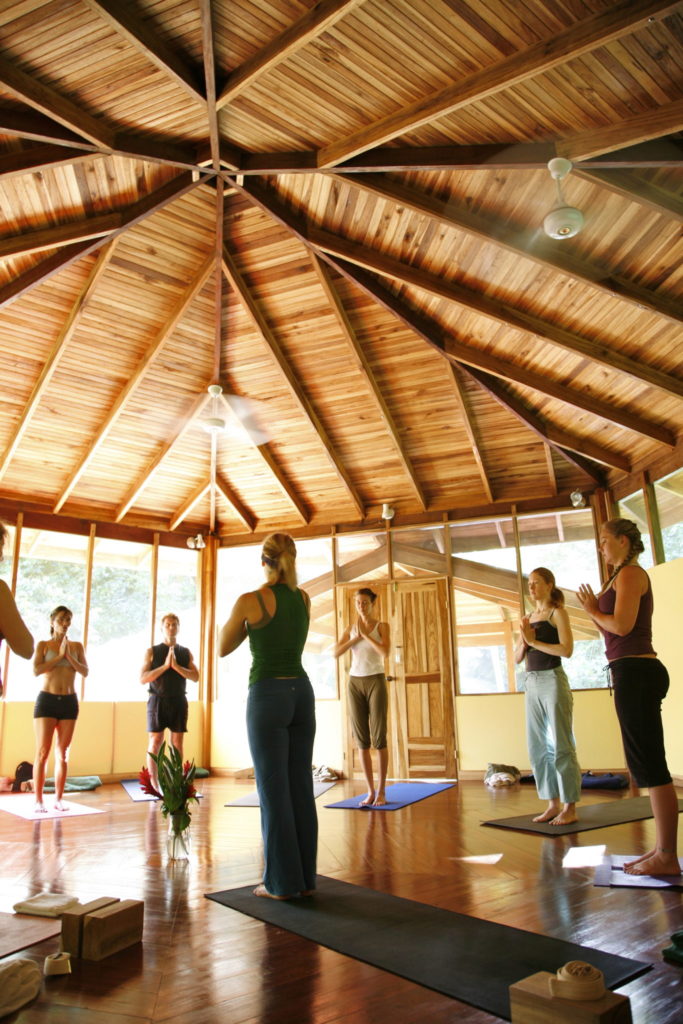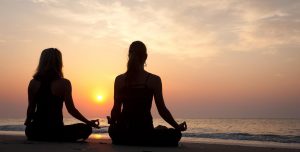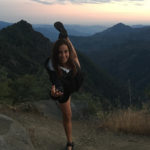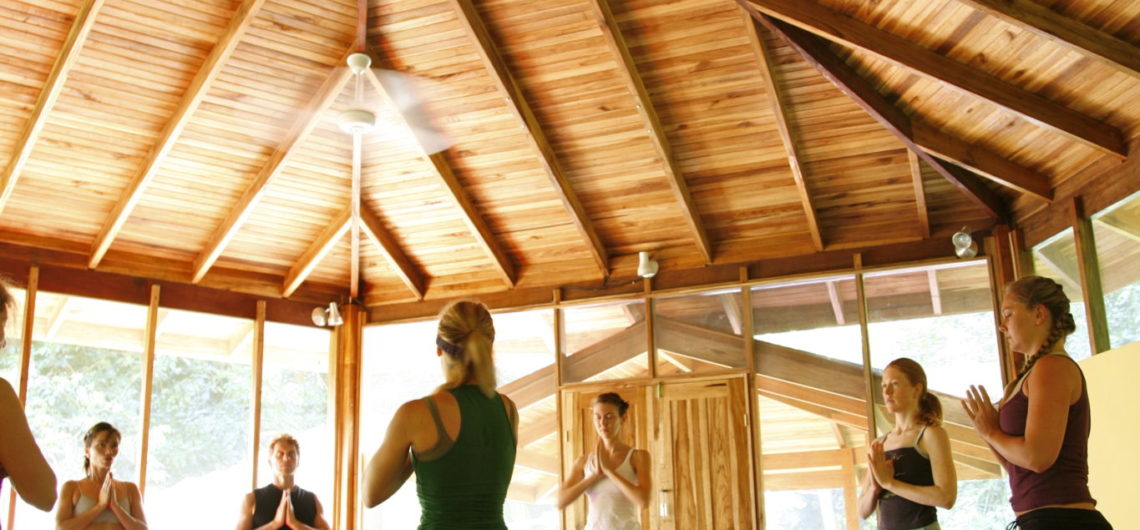This Independence Day, I bring you a yoga sequence focused on freedom, the type of internal freedom that most of us struggle with daily. I am speaking about the freedom from stress and emotional pain and the freedom from physical pain. Believe it or not the two are linked. Often our emotional pain is manifested as physical pain. Think when you are stressed and your shoulders tighten. Have you ever thought that the tightness of your hips may be linked to your emotional state? The hip muscles in fact show us a lot about our mental health. Trauma, sadness, fear, anxiety, and sadness can all show up in our hips. In the following sequence I focus on some hip openers to bring you emotional freedom and freedom from physical pain you may experience.
 Begin standing, hands to heart’s center, grounding down through your feet, standing tall. On your next inhale, raise your arms to the sky and dive forward, forward fold. You may hold your elbows, drop your head, and sway as you feel your lower back and hamstrings start to release. Slowly place your hands on the floor and walk your feet back out to downward dog, feet hips distance apart. Take deep breaths as you walk your feet out. Press your hips to the sky and drop your neck, feeling the length throughout your back. On your next inhale, raise your right leg to the sky for downdog split. Bend your right lifted knee to start opening the hip. Continue grounding down your left heel to the floor. When you feel ready, bring your right lifted leg through to your hands to low crescent lunge. Make sure your right knee is in line with your toe, and start feeling the stretch through the front of the left hip flexor. Breathe as you reach your arms and chest to the sky. On your next exhale, bend forward, placing your hands inside the knee to lizard lunge. You may even press your right leg open if that feels good to you. After 5-10 breaths here slowly make your way back to downward dog. Repeat on the other side by first raising your left leg.
Begin standing, hands to heart’s center, grounding down through your feet, standing tall. On your next inhale, raise your arms to the sky and dive forward, forward fold. You may hold your elbows, drop your head, and sway as you feel your lower back and hamstrings start to release. Slowly place your hands on the floor and walk your feet back out to downward dog, feet hips distance apart. Take deep breaths as you walk your feet out. Press your hips to the sky and drop your neck, feeling the length throughout your back. On your next inhale, raise your right leg to the sky for downdog split. Bend your right lifted knee to start opening the hip. Continue grounding down your left heel to the floor. When you feel ready, bring your right lifted leg through to your hands to low crescent lunge. Make sure your right knee is in line with your toe, and start feeling the stretch through the front of the left hip flexor. Breathe as you reach your arms and chest to the sky. On your next exhale, bend forward, placing your hands inside the knee to lizard lunge. You may even press your right leg open if that feels good to you. After 5-10 breaths here slowly make your way back to downward dog. Repeat on the other side by first raising your left leg.
As we meet together in downward dog, raise your right leg to the sky and bring it through to pigeon pose. Your right knee is forward on the floor, with the shin slightly diagonal. Try to even out your hips by rolling the left hip bone forward. You may find placing a block or pillow under your right hip may help. Slowly bend forward. Pigeon pose is an extremely deep hip opener so stay here for 5-10 breaths and try to allow your hip to release. We naturally want to hold onto the tension that may have been in our bodies for so long, but pigeon pose is a time to allow our mind and bodies to become free of that stress, anxiety, fear. Do not be alarmed if emotional tension also starts to release here. Continue breathing deeply. Allow the release happen. When you are ready, bring your right leg back to downward dog and pedal out the feet. Repeat pigeon pose with the left leg forward.

The last pose of this sequence is wide-angle seated forward bend. Open your legs so you can continue to sit comfortably on the floor without feeling tension. Focus on rotating your thighs out so your knees face directly up. This may be enough opening for you today, or you may feel like you would like to bend forward slowly. Continue bending forward, keeping your knee caps pointing straight up. Breathe here, feel the muscles releasing. After 5 deep breaths, slowly walk your hands back and bring your legs together and into a cross leg position. Bring your hands together to your heart and breathe. Focus on how you feel mentally, physically, on the freedom that happened through these hip openers. This is a short sequence that can be practiced every morning or every night, and you will start to notice the freedom these poses can bring.
About the Author
 Alexandra is thrilled to be working with True Nature! As a Yoga Teacher and Artist with a Master of Public Health in Environmental Health, work experience at the Environmental Protection Agency, and a passion for travel, her life’s path weaves into the mission and values of True Nature Travels. Since first traveling to Costa Rica at the age of fourteen to study ecology at remote biological field stations, she saw the power that experiential travel abroad has on one’s growth. Since then, she has worked the organic fields of a spiritual and intentional community and continued to travel, immersing herself in the local cultures.
Alexandra is thrilled to be working with True Nature! As a Yoga Teacher and Artist with a Master of Public Health in Environmental Health, work experience at the Environmental Protection Agency, and a passion for travel, her life’s path weaves into the mission and values of True Nature Travels. Since first traveling to Costa Rica at the age of fourteen to study ecology at remote biological field stations, she saw the power that experiential travel abroad has on one’s growth. Since then, she has worked the organic fields of a spiritual and intentional community and continued to travel, immersing herself in the local cultures.


